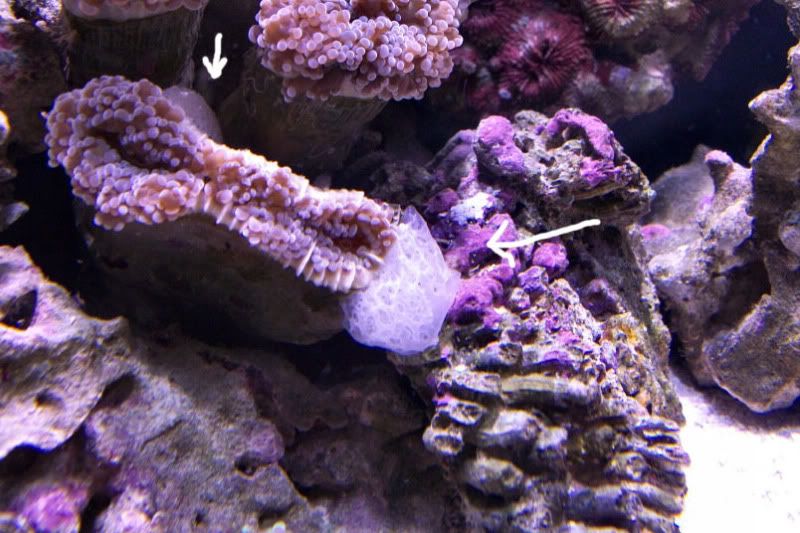


|
 |
|
|
#1 |
|
Registered Member
Join Date: Dec 2008
Location: Elizabethtown, PA
Posts: 177
|
ID growth on frogspawn
I snapped a photo of the white growths on my frogspawn coral... I believe they are a couple sponges, but I thought I could get some confirmation. It doesn't appear to be harming the extension of polyps (this was taken just as the lights came on and polyps had not had a chance to extend).
[IMG]  [/IMG] [/IMG]
|
|
|

|
|
|
#2 |
|
Registered Member
Join Date: Nov 2006
Posts: 1,385
|
They are sponges. I have them growing on most of my Euphyllia corals.
|
|
|

|
|
|
#3 |
|
Registered Member
Join Date: Feb 2001
Location: LI,NY
Posts: 3,877
|
I believe that they are calcareous sponges. I have them as well, but not in direct sunlight like yours.
|
|
|

|
|
|
#4 | |
|
Registered Member
Join Date: Dec 2008
Location: Elizabethtown, PA
Posts: 177
|
Quote:
How large will they get? |
|
|
|

|
|
|
#5 |
|
Registered Member
Join Date: Dec 2008
Location: Elizabethtown, PA
Posts: 177
|
Actually, as an aside, the sponge on the right has covered a portion of skeleton that was not producing polyps at the time I got the coral, so it hides the dead... so it's nice in that regard!
__________________
------------------------- 55g long mixed reef. 60lbs LR, 2 x 150 HQI 15k MH, BH 1000 Octopus HOB Skimmer, Sumpless, 2x Hydor Koralia 3s + 1x Hydor Koralia 1, HOB filter for Carbon. |
|
|

|
|
|
#6 | |
|
Registered Member
Join Date: Dec 2008
Location: Elizabethtown, PA
Posts: 177
|
Quote:
|
|
|
|

|
|
|
#7 |
|
Premium Member
 Join Date: Jun 2003
Location: Ft. Lauderdale
Posts: 10,598
|
Your sponge isn't C. coriacea, which is a coldwater sponge. I wouldn't even assume that your sponge is calcareous. In fact, from just a picture there's really not much that can be said about a sponge as far as IDs go. In most cases you can tell which of the 3 main classes it belongs to, but anything beyond that takes microscopic examination and usually an expert.
Yours is a white demosponge, but that's about as specific as you can really hope to get.
__________________
Some say the sun rises in the East. Some say it rises in the West. The truth must be somewhere in the middle. Current Tank Info: tore them down to move and haven't had the time or money to set them back up |
|
|

|
|
|
#8 |
|
Registered Member
Join Date: Dec 2008
Location: Elizabethtown, PA
Posts: 177
|
Thanks for the info greenbean... any way of knowing how large they can get?
__________________
------------------------- 55g long mixed reef. 60lbs LR, 2 x 150 HQI 15k MH, BH 1000 Octopus HOB Skimmer, Sumpless, 2x Hydor Koralia 3s + 1x Hydor Koralia 1, HOB filter for Carbon. |
|
|

|
|
|
#9 | |
|
Registered Member
Join Date: Nov 2006
Posts: 1,385
|
Quote:
As for how large they get, I can't really say. The type I have seen typically forms a colony on the uninhabited parts of the skeleton which looks like a single asymmetrical blob. |
|
|
|

|
 |
|
|